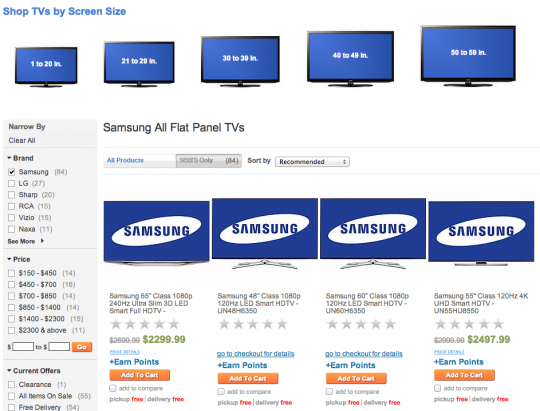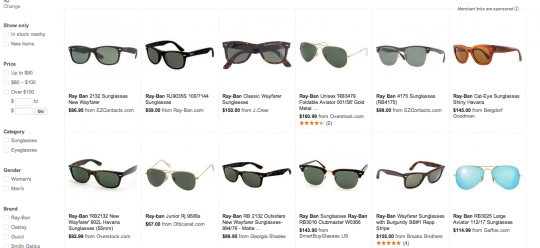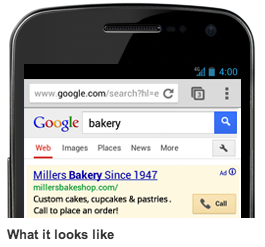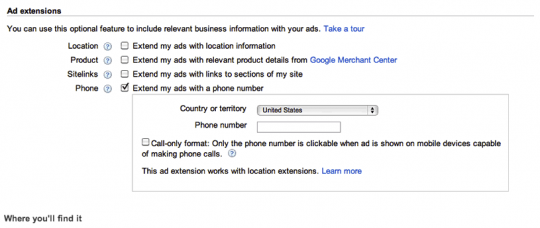Big List of Ecommerce Strategies – Part 1: Paid Search

Welcome to part one of our look at new ways to boost your ecommerce business. This series of articles is a compilation of the top fixes (some quick, some more involved) you need to navigate the ever-changing landscape of online marketing. First let’s take a look at paid search.
It’s a staple in ecommerce marketing, but engaging in paid search is only the first step in maximizing its potential. There are many ways to optimize paid search for increased conversion and return on your initial ad investment. Here are a few ways to make those ads work for you:
1. Focus on brand names of products
If you carry big name brands, your customer might be searching those out individually. Samsung TVs, Chanel perfume, and Apple products are specific search terms that are used often enough to lead to your site. This is especially true if you are offering them at a competitive price.
You can target names of products as well as brands. The more specific, the better. As you can see below (lower right corner), Kmart is missing out on valuable keyword traffic.

2. Create landing pages for brands
Once you enter the bidding process for product names, you need to ensure your potential customers land on a relevant page, not a crowded category page. For larger groups, funnel users in with landing pages that guide and sell. If they are searching and arriving at your site through an ad for Samsung TVs, don’t land them in the TV category. Having a dedicated page for brand names can help your site rank well in SEO in addition to giving you a good paid search landing page. Remember that Kmart ad above? Clicking the ad brings you to Kmart’s homepage even though they do stock Samsung TVs.
3. Filter or search for smaller categories
That being said, it can be time consuming and expensive to create a full scale landing page for every specific product/service type. A quick fix is to land the user on a filtered category or an on-site search page, which are easy to tailor to very specific ads. For example, Sears brings customers to a filtered page with additional options for size, price, and more.

Which leads us to…
4. Get hyper-specific
Your ad groups should be tailored to your keywords. Don’t try to get too creative here. You have a limited character count so each micro-category or long tail keyword should be clear and specific. Sunglasses break down into “prescription sunglasses,” “aviators,” “kids’ sunglasses,” or “Ray-Bans.” A search report will help you decide which words to target and when. A further breakdown of “Ray-Bans” would give you hyper-specific adgroups like “tortoise shell,” “black,” “prescription,” “women’s,” etc. Writing ads that fill each specific category will lead your customer to your stocked product. Take a look at these examples of good and bad writing for “tortoise shell Ray-Bans”:
Bad: Fashion sunglasses Tons of styles and colors Great for summer – Glasses Hut
Good: Tortoise Shell Ray-Bans Now 50% off retail prices Shop now – limited availability
The first example is missing keywords, price/discount information, as well as a call to action. The second ad is going to see a much better click through rate and probably conversion rate as well. Here are some more tips for writing effective ads.
5. Don’t ignore Google shopping ads
You may already be using AdWords, but if you’re not using Google’s shopping ads through Merchant Center you’re missing out on huge business potential. Simply set up your account, and then link it to your AdWords to begin (here’s an easy guide from Google). Your adwords account gives you options like viewing searched terms for products. Using the keywords you appear for, you can create a useful list of negative keywords. Periodically review what terms your products are showing up for to find keyword inspiration for your other campaigns. You can also use this information to better understand where you’re appearing and optimize your listings.
6. Use comparison shopping engines
Shopping engines could very well offer some of the best ROI for your ecommerce business. Most engines are pay-to-play, but a few offer free uploads for your listings. Not using them is missing a major opportunity. Check out this list of the top ten comparison shopping engines. For the best performance, make sure you watch which products are converting and keep track of product inventory levels. Ideally your product feed pauses items that are out of stock to reduce wasted ad spend.

7. Protect your brand name
It may seem like a waste of time and money, but buying ads for your own brand name is key to keeping your customers from going to competitors and can be one of your smartest investments. Bidding on your own brand is especially important for market leaders as your brand name becomes associated with the product. Typically, these campaigns will show an excellent ROI as your ads are more relevant and have a higher click through rate than competitors, ultimately making them cheaper.
8. Optimize mobile ads
Mobile optimization is essential to reaching a growing source of ecommerce customers. There are many easy ways you can optimize mobile ads, such as setting mobile preferences on ads — including a “click to call” extension — and landing users on a mobile-optimized site. Also, if you’ve got an app, don’t forget to advertise it!


9. Be tablet-friendly
Your ads are going to tablet users whether you like it or not — if you’re advertising on desktop, those ads go to tablet as well. There’s no excluding or bidding down the platform, so you might as well embrace it. Consider creating an app, or using responsive design for your site to increase conversions.
10. Pause low-stocked campaigns
Finally, If you don’t have the product, don’t push it. You can save money and your brand’s reputation by pausing or lowering the bidding on specific products that aren’t in stock. Don’t be the brand that doesn’t fulfill expectations. All too often money goes out the door for products that can’t be purchased even if the customer wanted to.
Stay tuned for part two of our series of ecommerce strategies.
Ripen Services
Let us take the lead on your lead generation. Whether your brand is big or small, old or new, our integrated marketing uses data and skills from every department to build you a smarter, more beautiful business. See more ecommerce solutions.
Let’s get started.
Find out how we can help your ecommerce strategy.
Get in touch
If you’re a rockstar with big ideas, join our team.




